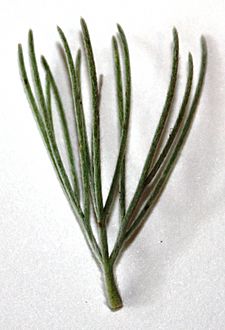Woollybush facts for kids
Woollybush, also known as woolly bush or woolly-bush, is a special name for certain plants in the Adenanthos family. These plants have leaves that are divided into many long, soft, and thin parts. They are often covered in tiny, soft hairs. This makes the leaves feel very soft and silky, which is why they are called 'woolly'.
This is quite different from most plants in southern Australia and their plant family, Proteaceae. Those plants usually have tough, hard leaves. The soft, fuzzy feel of the woollybush leaves is what gives them their common name.
What is a Woollybush?
Thirteen different types of Adenanthos plants are known as woollybushes. Many of these plants have "woollybush" as part of their common name. However, the two types of Adenanthos that grow outside of Western Australia are also woollybushes. But their common names are based on "gland flower" instead. This suggests that the name "woollybush" is mostly used in Western Australia.
Types of Woollybush Plants
Here are some of the different species of woollybush:
- Adenanthos acanthophyllus (prickly woollybush)
- Adenanthos argyreus (little woollybush)
- Adenanthos cygnorum (woollybush, common woollybush)
- Adenanthos dobagii (Fitzgerald woollybush)
- Adenanthos labillardierei
- Adenanthos macropodianus (Kangaroo Island gland flower)
- Adenanthos meisneri (prostrate woollybush)
- Adenanthos oreophilus (woollybush)
- Adenanthos sericeus (woollybush, coastal woollybush, tall woollybush, Albany woollybush)
- Adenanthos terminalis (yellow gland flower)
- Adenanthos velutinus (velvet woollybush)
- Adenanthos × cunninghamii (woollybush, Albany woollybush, prostrate woollybush)
Where Did the Name Come From?
A plant expert named Ernest Charles Nelson has studied these plants. He says that the name "woollybush" has been used for a very long time. He believes the name first started in the area around Albany, Western Australia.



